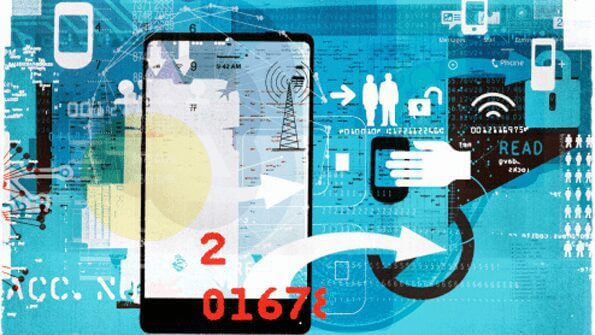
Are you afraid of your identity being stolen? Looking to protect against online fraud? You are not alone.
Forbes reported a mobile security study in which 69% of respondents said that having others access their personal information is one of their biggest fears. However, the article also revealed that most Americans don’t take the proper precautions to protect their personal information. In order to prevent a fear from becoming a reality, here’s what you can do to protect you and your family online…
(1) Create ironclad passwords. Think of your passwords as the door to your home, which holds all of your nearest and dearest belongings. You wouldn’t want the door to your home to be paper thin, nor should you want your passwords easy to guess. While it is a pain to create different passwords for each of our online accounts, it is one of the most effective ways to prevent hackers. Experts say passwords should be at least 10 characters long and include a mix of upper and lower case letters, numbers and characters. Never use your name, initials or birthday in your password. A great way to make a creative, secure password is by thinking of a special phrase and using the first letter of each word as your password. Then, to make the password even stronger, substitute numbers for words or letters. The Federal Trade Commission provides one such example: for the special phrase “I want to see the Pacific Ocean,” the password could be 1W2CtPo.
(2) Let your face, fingerprint, or voice be your password. Biometric verification is any method by which a person can be uniquely identified, such as through a fingerprint or eye scan, facial recognition software, or voice verification features. Smartphones have fingerprint scanners, which can also be used in conjunction with other apps as one’s login. For example, Bank of America allows its customers to sign into their mobile banking app with just a touch of their finger. One’s voice could also be used to verify his or her identity, a feature which Google Voice, Craigslist and Vanguard Financial tout.
(3) Choose double-verification. If you have a Google account, you probably know about double verification: anytime you try to access your account from an unfamiliar computer, Google asks for your password and also generates a one-time use password that they send to your cell phone. Whenever a site you regularly use offers you multi-factor authentication, take advantage.
(4) Encrypt your data. To keep confidential and important information secure online, use encryption software. Encryption scrambles the information you transmit until it reaches the intended recipient, who usually must enter a passcode before accessing the information. You can send encrypted files with DropBox Business.
(5) Secure your Wi-Fi. Make sure that strangers can’t access your wireless Internet by changing your wireless router’s name and pre-set passwords. Use antivirus security software that will protect your computer and other devices from viruses, hackers, spyware, scams, spam mail, and unwanted ads.
Don’t click on questionable links. Have you ever received an email from a friend’s account that you know can’t be right? Your friend’s account has likely been hacked, and their contact list is being used to send spam. Don’t open any links in these emails and tell your friend he or she has been hacked. Also beware of phishing scams, in which fraudsters try to steal your personal information by posing as legitimate businesses or people you know.
(6) Supervise your children’s online activity. Supervise your children’s Internet activity, which can be done most easily by having a family computer in the open. If you’d like additional security, you can take advantage of parental control features built in to your Mac or PC and desktop software such as Norton Family. These features will enable you to block undesirable websites, track your children’s online activity, and prevent your children from sharing personal information online.
(7) Back up your data. Mitigate the damages of a security breach by keeping copies of all your data. You can use the Cloud to store your pictures, Google Drive to hold your documents, and/or employ an external hard drive to back up everything on your computer.
(8) Monitor your credit. There are a variety of online tools that allow you to watch over your credit in real time. Some are built into an ongoing service while others like “Lifelock” are an extra fee. Given the variety and accessibility of these services, pick the one that has the best balance of features for the cost. One essential feature should be text, email, or pop-up messages on your smart phone when suspicious or questionable transactions occur. This will allow you the opportunity to spot fraud the moment it happens so you can keep it from infiltrating other accounts or creating more damage.
Protecting your personal information online will go a long way to protecting you, your family, and your assets and digital assets (for more digital asset protection, click here). While we’ve provide some great examples of how to get started, this by no means is an exhaustive list. Many people have other creative ways and new technology is always being put in place. We encourage you to continue the conversation with as many family, friends, and colleagues as possible. If you’d like to learn more about how you can protect your assets—including your digital assets— contact our office today.
